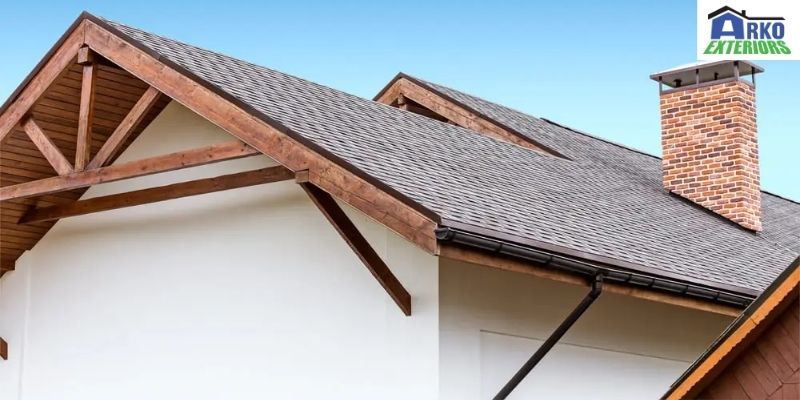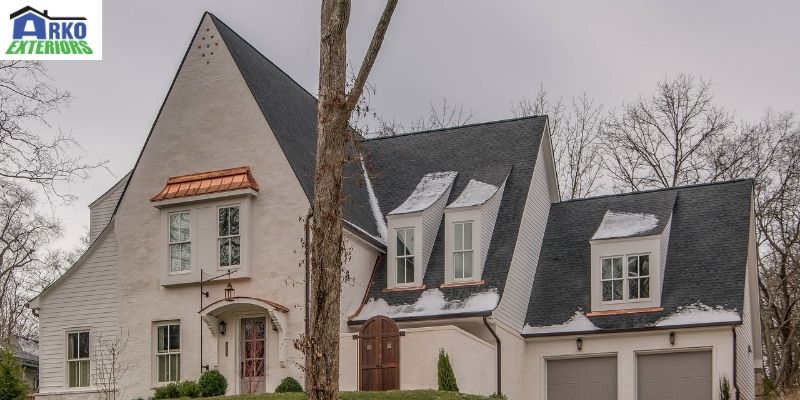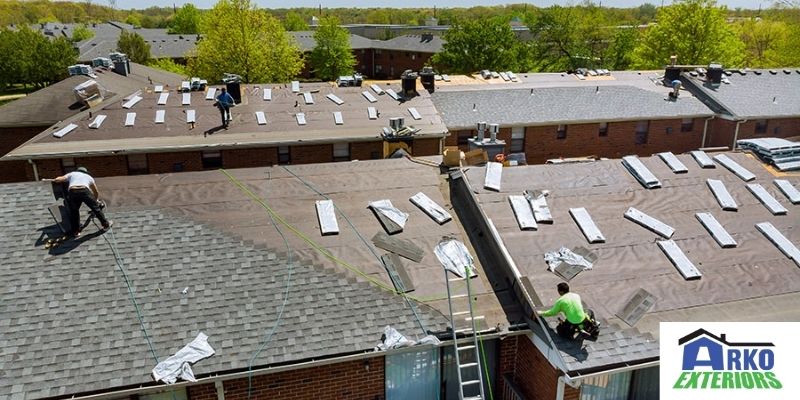Your roof’s shape has a significant impact on your home’s aesthetics. The slope of your roof, its construction and the material used all come together to defend you against elements. Roof replacement can be a challenge for many homeowners. This is because the slope of the roof goes a long way in defining the scope of the roofing project.
What Is Roof Pitch?

Roof pitch is the angle at which the roof over a building slopes. Roof pitch has no set standards in the housing industry. Therefore, many factors are put into consideration before the commencement of a roofing project.
You need to know how to figure out the ratio if you want to know the pitch of your roof. The ratio of the vertical “rise” of your roof to its horizontal “run” will give you the pitch of your roof. In other words, the pitch of your roof is the vertical rise for every 12 inches of the horizontal surface. A roof at 9:12 is considered high while a 2:12 is considered to be a very low pitch.
Types of Roof According To Pitch
Roof pitch is how steeply it slopes. Some pitches are considered too high, while others are very low. However, most rooftops are somewhere in between. Some of the types of roofs according to their pitch are:
Flat roofs:
Surprisingly, flat roofs are not completely flat. They are slightly sloped. This is to make for effective water shedding. Typically, they have a pitch of between 1/2:12 to 2:12. A roof should not be completely flat. This is important to ensure the proper draining of snow and water.
Low-pitched roof:
A roof with a pitch of 4:12 and below is considered low. This type of roof requires special materials to prevent leaks. Unlike sloped roofs, low-pitched roofs require more maintenance.
Conventional roofs:
This type of roof is easy to build. It is also easy to walk on. The pitch of conventional roofs ranges from 4:12 to 9:12.
High-pitched roofs:

These types of roofs are unlike others. High-pitch roofs require more fasteners. Their pitch can be as high as 21:12.
How Roof Pitch Can Affect Your Roof Replacement
You have the option to choose a pitch of your choice when building or remodeling your roof. The slope of your roof generally affects your home.
Here are ways in which roof pitch replacement affect your home:
1. Water collection and flow
High-pitched roofs are good at moving water. The high slope increases the effect of gravity, getting rid of snow in cold winters and moisture in hard rainfall. However, more pressure is exerted on the gutter systems because they need to withstand the increased rate of water flow. A properly sized gutter combined with a higher pitch is a great choice if rains are common in your area.
In contrast, rooftops with low slopes are not very good in areas that experience a lot of rainfall. It is very easy for them to develop standing water issues, unlike their steeper versions. Lingering moisture can affect your roof, even compromising its structural integrity. It is therefore important that your roof pitch is good enough for the proper flow of water.
2. Debris and leaf collection
High-pitched roofs do not collect many leaves and other debris. This is because gravity causes these elements to slide and get blown off the roof. However, debris is likely to rest on rooftops with low slopes.
Having roofs with a low slope can be an issue if you live in an area with many trees nearby. This may lead to mildew and moisture damage because of how easy needles and leaves can foster moisture. You should have a roof that will help you avoid long-term debris as long as possible.
3. Wind shear
The velocity of winds around sharp edges is referred to as wind shear. Areas such as seasides and hills that experience a lot of wind are more vulnerable. If you live in such places, you must consider the effects that wind shear will have on your roof.
Shingles are at greater risk on high-pitched roofs. This is because these roofs tend to experience more wind shear than others. Stormy weather is even more dangerous. In this case, a lower pitch roof is better. It will help you prevent your roof from damage that may be caused by wind shear.
4. The difficulty of repair and renovation
A high-pitched roof requires a complicated support structure. Their repair costs may be higher especially when you are replacing a significant section of the roof.
Generally, rooftops with low slopes are less expensive to replace. Furthermore, the type of roofing materials may also be a factor that determines the cost of repairs and renovation. For instance, a lot goes into the replacement of shingle roofs when considering their steepness.
5. Cost of installation
Installation cost is another factor that affects your pitched roof replacement. This is because varying techniques are required in the installation of some roof materials, such as shingles. Shingle replacement becomes more complex when it involves steep-sloped roofs. Additionally, your roofer may want to follow the manufacturer’s instructions to keep the roofing warranty valid.
Regardless, high-pitched roof replacement will require more time and money. This increases the cost of the roofing project in the long run. Moreover, steep-sloped roofs require specialized skills for guaranteed safety. The complexity and specialized skill required for the job will invariably raise labor fees.
Conclusion
The roof pitch of your home affects its general functionality. Both low-pitched and high-pitched roofs differ in their characteristics. Also, replacing either of them will have a great impact on water flow and collection, cost of replacement, and repair and renovation difficulty. If you are not sure about your particular roof requirements then consult roofing experts who can guide you and help you get the most suitable roof for your house. Locally, hire Arko Exteriors for roofing jobs; Call 763-434-2756 for more information.

